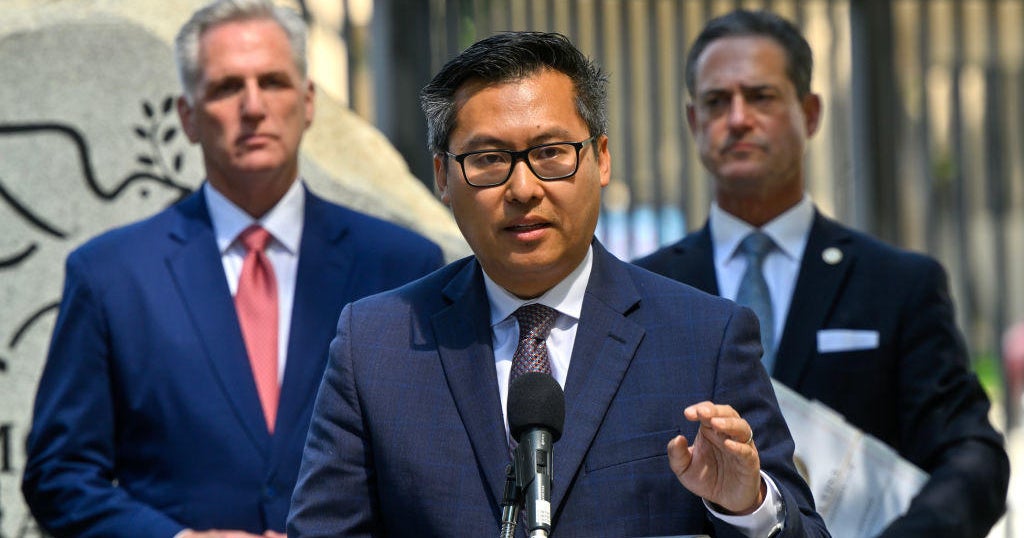Finance
Retailers fund the future with sustainable supply chain finance solutions
Retailers are exploring innovative ways to address climate change and related sustainability issues. One emerging option is collaborating with banks to create additional financial incentives for retail suppliers to become more sustainable. Known as sustainable supply chain finance solutions, these financial instruments allow retail suppliers to get paid sooner and with more advantageous financial terms when those suppliers meet specific sustainability objectives.
What are sustainable supply chain finance solutions?
It is typical in many supply chains, including the interconnected retail supply chain networks, for suppliers to rely upon bank financing to get paid sooner than required for the goods they deliver. In return for getting paid sooner, the suppliers accept a slightly discounted payment from the bank rather than the full amount from the retailer or other buyer. When available, suppliers negotiate the finance charges directly with the bank. These finance agreements benefit the supplier by increasing immediate cash flow that they can use to improve their business while also generating revenue for the banks.
With sustainable supply chain finance solutions, the buyer and the bank collaborate to improve the financial terms for those suppliers meeting specific sustainability objectives. Suppliers that meet a buyer’s requirements for carbon reduction goals and reporting, additional fair labor practices, or other environmental and social goals, for example, can access better financing rates from participating banks. It gives suppliers access to additional capital that they can use to continue improving their business, including investing in additional sustainability efforts.
Why are sustainable supply chain finance solutions important?
Sustainable supply chain finance solutions provide retailers with an additional way to reward retail suppliers for improving their sustainability efforts. Rather than switching business from long-term suppliers for not meeting sustainability objectives fast enough, retailers can work within existing financial markets to unleash additional capital for suppliers to accelerate the needed improvements. It is a way for retailers, working collaboratively with the suppliers’ banks, to help finance the transition toward more sustainable business practices across the retail supplier community.
What companies are using sustainable supply chain finance solutions?
Several retailers are working with HSBC and other banks on sustainable supply chain financing solutions. Three well-known examples include Walmart, PVH and Levi Strauss & Co.
Working with HSBC and CDP in 2019, Walmart created a sustainable supply chain finance program that integrated science-based targets as part of its Project Gigaton initiative to remove 1 billion metric tons of greenhouse gases from its supply chain by 2030. Suppliers that set and achieve the most ambitious sustainability targets receive the most favorable financing.
PVH Corp., best known for brands such as Tommy Hilfiger and Calvin Klein, launched its program in June 2022, becoming the first retailer to include both environmental and social objectives. PVH is benchmarking suppliers against metrics defining a healthy and safe working environment and the elimination of child labor, workplace harassment and abuse. Suppliers meeting its standards qualify for discounted financing through HSBC, DBS and Standard Chartered Bank.
Levi Strauss & Co. also partnered with HSBC on a sustainable supply chain finance program. During the first 10 months of its program, launched in February 2021, 16 of the 21 suppliers participating in the program earned lower interest rates by meeting sustainability performance metrics outlined in the company’s Supplier Code of Conduct. As a result of the program, suppliers received payments 71 days earlier, on average, than their customary payment schedule.
Retailers are committed to reducing greenhouse gas emissions within their own operations and encouraging their suppliers to do the same. Retailers are reducing energy and fuel use, transitioning to renewable energy, mapping the carbon footprint of the products they sell, and working with suppliers to improve products, materials and packaging.
Sustainable supply chain finance solutions are another tool retailers are using to promote sustainability by incentivizing their suppliers to address climate change and broader sustainability issues. It is a way to finance a better future for everyone.

Finance
Oregon lawmakers spend $5.4 million to prep for oncoming campaign finance rules

Oregon lawmakers are spending more than $5.4 million to help elections officials revamp their system for reporting campaign finances and clear a massive backlog of languishing election complaints, in preparation for new rules set to shake up state politics.
The money, approved Friday morning, is a crucial bit of unfinished business left after lawmakers’ scramble earlier this year to pass a package that will limit the money Oregon political campaigns can accept beginning in 2027, among a host of other changes.
Oregon lawmakers approved new campaign finance rules earlier this year to curb the impact of money in swaying voters. Now, lawmakers plan to spend $5.4 million to upgrade the system used to track political spending and hire more staff to help investigate complaints. Voters line up at the Multnomah County Elections Division in Portland, in this Nov. 8, 2022 file photo.
Kristyna Wentz-Graff / OPB
That surprise proposal, House Bill 4024, was the product of hurried negotiations between business, labor and so-called good government groups. But it came together too late for elections officials to get a clear picture of what it would cost to put into place.
Secretary of State LaVonne Griffin-Valade instead brought a $5.4 million proposal forward this week, as lawmakers are meeting for routine interim committee hearings and considering dozens of “emergency” spending items. Similar or higher costs for the effort are likely in the next budget.
Griffin-Valade’s proposal includes expanding her office by 21 employees.
Many of those will be informational technology workers who will help completely revamp the state’s ORESTAR system for reporting and displaying campaign financial transactions. Oregon elections officials have pressed for years for funding to replace the two-decade-old system, which they say is unwieldy for users and so old that finding technical support is difficult. The office is now seizing on the new campaign finance rules – and a related requirement that it create a new online dashboard to help the public track political spending – to push forward with a replacement. A written proposal says the Secretary of State plans to “undertake a complete overhaul of ORESTAR prior to January 1, 2027… with a required go-live date of January 1, 2028.”
The office is also proposing adding two investigators who can look into elections complaints that have ramped up in recent years, along with a manager to oversee that work. Those would add to an existing staff of three investigators, one of which was approved in the recent legislative session.
There are more than 750 outstanding complaints before elections officials, some of them years old, and more coming in all the time.
“So far during the 2024 election cycle, SOS has received twice as many complaints as they had at this point in the 2022 election cycle and seven times more than the 2020 election cycle,” the Secretary of State’s Office said in a budget request.
Griffin-Valade says extra workers will be necessary to clear the backlog before the onset of new regulations that are bound to spur new complaints, and which require that officials handle complaints more quickly.
The surge in complaints isn’t unique to Oregon. But it has been a special concern to lawmakers like state Rep. David Gomberg, D-Otis, who urged his colleagues to approve the funding in a meeting of the Legislature’s Emergency Board on Friday morning.
“This isn’t something we can wait on,” Gomberg said.
Not everyone was convinced. A handful of Republican lawmakers voted against the package over concerns that the funding should have been approved alongside the campaign finance bill, and that the state was moving too hastily to replace its ORESTAR system.
“I don’t see any harm in waiting until the next legislative session,” said state Sen. Fred Girod, R-Silverton.
The proposal passed the Emergency Board despite those concerns.
Finance
PODCAST | Adapting to change: The future of factoring and supply chain finance

Estimated reading time: 5 minutes
Listen to this podcast on Spotify, Apple Podcasts, Podbean, Podtail, ListenNotes, TuneIn
The volatility of the geopolitical and macroeconomic environment in recent years has caused some problems in the trade, treasury, and payments industries.
However, industry actors have adapted and are working together to build resilience and make international trade even stronger.
To hear about developments in the factoring and supply chain finance world, Trade Finance Global (TFG) spoke with Çağatay Baydar, Chairman at FCI and Irina Tyan, Principal Banker, TFP at the European Bank for Reconstruction and Development (EBRD).
Challenges and growth in the factoring industry
The factoring industry has demonstrated impressive growth since the turn of the century despite facing significant challenges, particularly in emerging markets.
Baydar said, “The growth rate in 2023 was 3.3% globally in the volume of the world factoring and in 2022 it was 18%. Over the last 20 years, the average growth rate has been 8% which shows that factoring is becoming a mainstream financial product globally, which is very good indeed.”

The sector, which revolves around the purchase of receivables from businesses to provide them with immediate liquidity, has become an essential component of global trade finance, but it also faces challenges. One of the primary challenges is the bureaucratic and infrastructural limitations inherent in the current system.
Factoring, being an invoice-based product, requires a significant amount of paperwork and documentation, which can be cumbersome and traditionally relies on a paper-based system that only adds to the administrative burden for businesses.
In developed regions like Europe, factoring’s penetration rate – a measure of the amount of trade volume that uses factoring – is around 15%, reflecting a more mature understanding and use of this financial product. By contrast, in emerging markets, the penetration rate is significantly lower, with countries like Turkey and Georgia showing rates as low as 3%.
This discrepancy highlights the knowledge gap and infrastructural deficiencies in these regions. Businesses in these markets often lack the necessary awareness and understanding of factoring, which limits their ability to leverage this financial tool to its full potential.


However, factoring usage in some emerging markets is growing.
Tyan said, “We see the progress in the countries where we started five to seven years ago, like Georgia. We recently had a workshop in Jordan, where we also see a more adapted market, more ready to look into this type of product.”
Further collaboration and efforts to promote regulatory reforms and technological advancements may be what is needed to drive factoring growth in these underutilised regions.
Regulatory reforms and technological integration
Regulatory reforms are crucial for the sustained growth and development of the factoring industry, and legal clarity is particularly important in emerging markets, where the absence of a well-defined regulatory environment can pose significant barriers to factoring’s growth.
One of the key areas that require attention is the standardisation of data exchange formats.
Creating common data standards for supply chain transactions can facilitate smoother integration between different platforms and financial institutions, improving efficiency, reducing administrative burdens, and enhancing the overall effectiveness of the factoring process.


Another important aspect of regulatory reform is cybersecurity.
Tyan said, “As this product heavily relies on platforms, clear regulation on data security and cybersecurity is crucial to build trust among the participants.”
Ensuring the integrity and security of transactions protects sensitive financial information from potential cyber threats and is vital for the long-term sustainability and credibility of the industry.
Digitalising to draw clients and talent to factor
The factoring industry has been significantly transformed by the integration of digital technologies that have made the process faster, more efficient, and more accessible, especially for small and medium-sized enterprises (SMEs).
Traditionally, the paperwork involved in factoring, particularly for international transactions, slowed down the process and added to its complexity but digital platforms are allowing for quicker access to funds and improving the overall client experience.
Baydar said, “Today, with digitalisation and the platforms, we are making our business much faster, quicker, and more effective. This really helps SMEs to touch the money very soon, very quickly. This makes our clients happier than before because they can experience a very fast, very effective, seamless transaction.”
This shift not only speeds up transactions but also minimises the risk of errors and fraud associated with manual paperwork and can help attract more young professionals to the industry.
Baydar said, “Young people prefer to work with new technology and high-level startup businesses rather than traditional models.”
The new generation of workers is drawn to innovation and technologically advanced sectors. By embracing digital advancements, the factoring industry can position itself as a forward-thinking and dynamic field, appealing to young talent looking for exciting career opportunities. This influx of new talent is essential for sustaining the industry’s growth and development in the long term.
Organisations that fail to embrace digitalisation risk being left behind in a rapidly evolving market, meaning that investing in digital solutions is not just an option but a necessity for the future of the factoring industry.
Finance
Money Masters Leasing & Finance Q4 Results Live : profit falls by 31.86% YOY

Money Masters Leasing & Finance Q4 Results Live : Money Masters Leasing & Finance declared their Q4 results on 30 May, 2024. The topline decreased by 24.58% & the profit decreased by 31.86% YoY. As compared to the previous quarter the revenue grew by 327.97% and the profit increased by 259.02%.
The Selling, general & administrative expenses rose by 306.33% q-o-q & increased by 880.74% Y-o-Y.
The operating income was up by 629.34% q-o-q & decreased by 71.14% Y-o-Y.
The EPS is ₹0.17 for Q4 which decreased by 34.85% Y-o-Y.
Money Masters Leasing & Finance has delivered -11.99% return in the last 1 week, 74.73% return in last 6 months and 72.57% YTD return.
Currently the Money Masters Leasing & Finance has a market cap of ₹138.48 Cr and 52wk high/low of ₹189.95 & ₹25.74 respectively.
| Period | Q4 | Q3 | Q-o-Q Growth | Q4 | Y-o-Y Growth |
|---|---|---|---|---|---|
| Total Revenue | 1.1 | 0.26 | +327.97% | 1.46 | -24.58% |
| Selling/ General/ Admin Expenses Total | 0.62 | 0.15 | +306.33% | -0.08 | +880.74% |
| Depreciation/ Amortization | 0 | 0 | +0% | 0.01 | -61.72% |
| Total Operating Expense | 0.75 | 0.21 | +258.18% | 0.24 | +215.33% |
| Operating Income | 0.35 | 0.05 | +629.34% | 1.22 | -71.14% |
| Net Income Before Taxes | 0.35 | 0.05 | +625% | 0.45 | -20.87% |
| Net Income | 0.18 | 0.05 | +259.02% | 0.26 | -31.86% |
| Diluted Normalized EPS | 0.17 | 0.05 | +252.17% | 0.26 | -34.85% |
FAQs
Question : What is the Q4 profit/Loss as per company?
Ans : ₹0.18Cr
Question : What is Q4 revenue?
Ans : ₹1.1Cr
Stay updated on quarterly results with our results calendar
You are on Mint! India’s #1 news destination (Source: Press Gazette). To learn more about our business coverage and market insights Click Here!
Download The Mint News App to get Daily Market Updates & Live Business News.
More
Less
Published: 31 May 2024, 11:10 AM IST
-

 News1 week ago
News1 week agoRead Prosecutors’ Filing on Mar-a-Lago Evidence in Trump Documents Case
-

 Politics1 week ago
Politics1 week agoMichael Cohen swore he had nothing derogatory on Trump, his ex-lawyer says – another lie – as testimony ends
-

 News1 week ago
News1 week agoVince Fong wins special election to finish term of former House Speaker Kevin McCarthy
-

 News1 week ago
News1 week agoVideo: Midwest Storms Destroy Homes
-

 World1 week ago
World1 week ago€440k frozen in Italy over suspect scam by fake farmers
-

 News1 week ago
News1 week agoBuy-now, pay-later returns and disputes are about to get federal oversight
-

 News1 week ago
News1 week agoRead the I.C.J. Ruling on Israel’s Rafah Offensive
-

 News1 week ago
News1 week agoVideo: Protesters Take Over U.C.L.A. Building



















